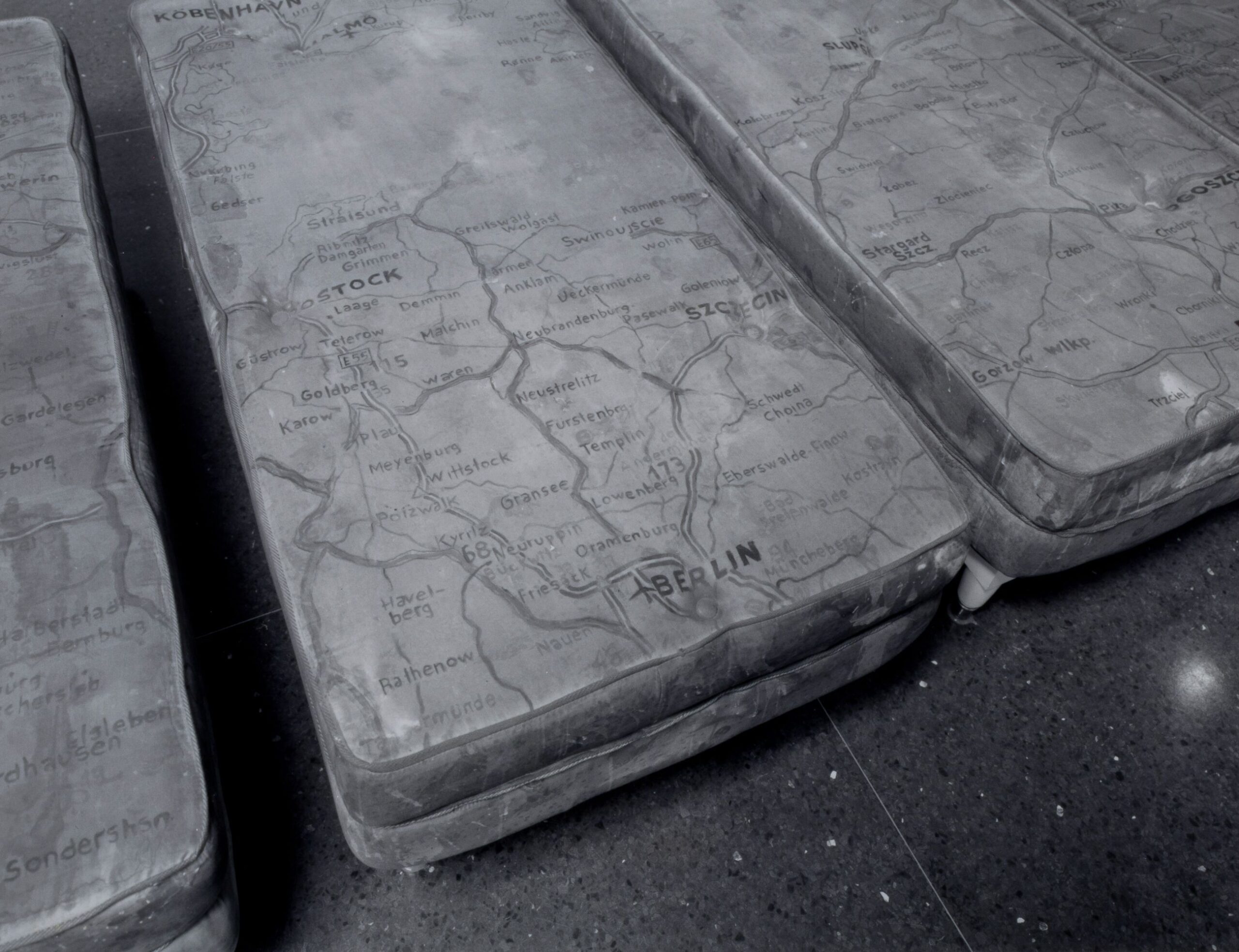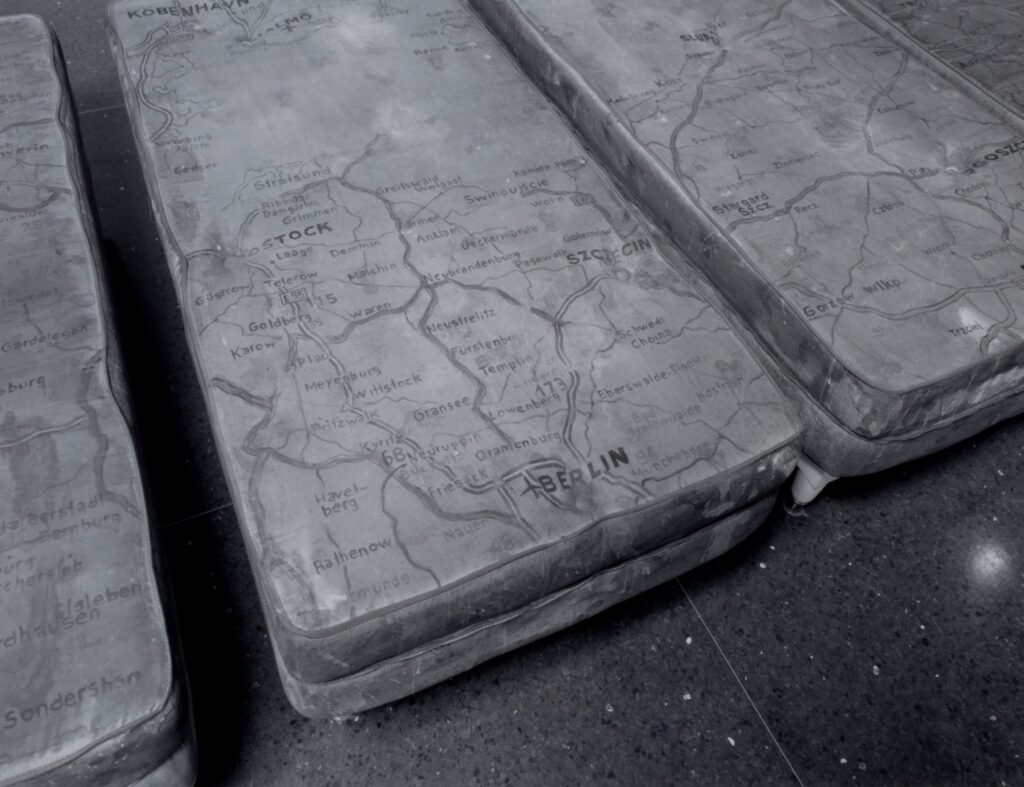Guillermo KuitcaBeds, Theaters & Drawings


Past exhibition
Guillermo Kuitca Beds, Theaters & Drawings
About the Exhibition
The Arts Club of Chicago is pleased to announce the opening of Beds, Theaters & Drawings, an exhibition of Argentinean artist Guillermo Kuitca’s work, on Friday, September 17. Featured in his first solo exhibition in Chicago will be an installation of 21 children’s beds painted with maps from 1991–2; several theater paintings from the Puro Teatro series; and over 80 drawings from 1981 to 1996 which are being exhibited for the first time. The exhibition will run through November 13, and the artist will be present at the September 17 opening tea from 4:00 p.m. to 6:00 p.m.
Since the early 80s, Kuitca has gained an international reputation for his spare and abstract paintings, drawings, and sculptures that explore a particularly modern sense of abandonment. In his work, which can be seen as an elegant meditation on the contemporary search for connection and grounding, Kuitca plays with the ideas of boundaries and limits, exploring the relationship between people and space as he creates a cartography of the psychological self. As he has stated, his work is “about a geographical nowhere that is also a spiritual everywhere.” Cartographic and architectural modes of expression inform Kuitca’s imagery—beds; maps of countries, cities, and cemeteries; apartment floor plans; institutional floor plans; genealogy charts; and theater seating plans and stage elevations—commenting on the human condition in relation to time, space, and identity.
“Place, or one’s spatial position, has long been a concern of Kuitca’s,” writes art historian Robert J. Loescher in the accompanying exhibition catalogue. Growing up in Buenos Aires during the political persecutions of the “Dirty War,” Kuitca’s paintings and drawings of cities and house plans, road maps and empty theaters, speak subtly of the emotional tenor of diaspora and nostalgia, evoking feelings of loss, longing, desire, and fear. But to speak solely of his works through autobiographical referencing is to miss Kuitca’s larger concerns about the human condition.
Kuitca began to develop the imagery he uses today in the early 80s. The development is evidenced in the drawings on exhibit. In Nadie Olvida Nada (Nobody Forgets Anything) 1982, primitively rendered beds with their covers turned down await occupancy. Empty, yet fraught with associations of birth, death, and passion, Kuitca’s beds become a site of emotional turmoil, alienation, and constriction. Kuitca began to depict stage spaces while involved in experimental theater productions in the early 80s. Interested in representing the dramatic moments after physical action has taken place, these works are stage sets for human trauma. In the 90s, a new body of work with theatrical references has emerged. His Puro Teatro and La Tablata Suite series show theater seating plans viewed from the stage into the audience and from overhead. As viewers of his theaters, Loescher points out, “we are both inside and outside the proscenium frame – actor and audience, the observed and the observer, the enlightened and obfuscated.” Kuitca’s apartment plans and roadmap works began in 1987. Conceived as generic diagrams of average middle-class apartments, the apartments, like the stage sets and beds, seem to be waiting for humans to activate them. Purposefully fragmentary, often illogical, Kuitca’s maps, such as Untitled (Corona de espinas) (Crown of Thorns) 1990, challenge the ability of geographic charts to define borders and create national identity. “From the beginning the places named in the maps didn’t represent anything I knew,” Kuitca writes, “… no here, or there, just names.” Names reappear in his genealogical charts. Representations of “a chain reaction,” the charts followed on the heels of the maps. As in the roadmaps, the name is all Kuitca needs to build a scene.
An accompanying exhibition catalogue with an essay by Robert J. Loescher, Goldabelle McComb Finn Distinguished Chair of Art History at The School of the Art Institute of Chicago, will be available for purchase.
About the Artist
Guillermo Kuitca was born in 1961 in Buenos Aires, Argentina. Kuitca had his first solo exhibition at age thirteen at Galeria Lirolay in Buenos Aires (1974). Since this precocious debut, Kuitca has had numerous international solo shows at such venues at Thomas Cohn Arte Contemporanea, Rio de Janeiro (1986, 1989, 1994); Witte de With Center for Contemporary Art, Rotterdam (1990); Kunsthalled Basel (1990); The Museum of Modern Art, New York (1991-2); Sperone Westwater, New York (1994); and Wexner Center for the Arts, Columbus, Ohio (1994-5).